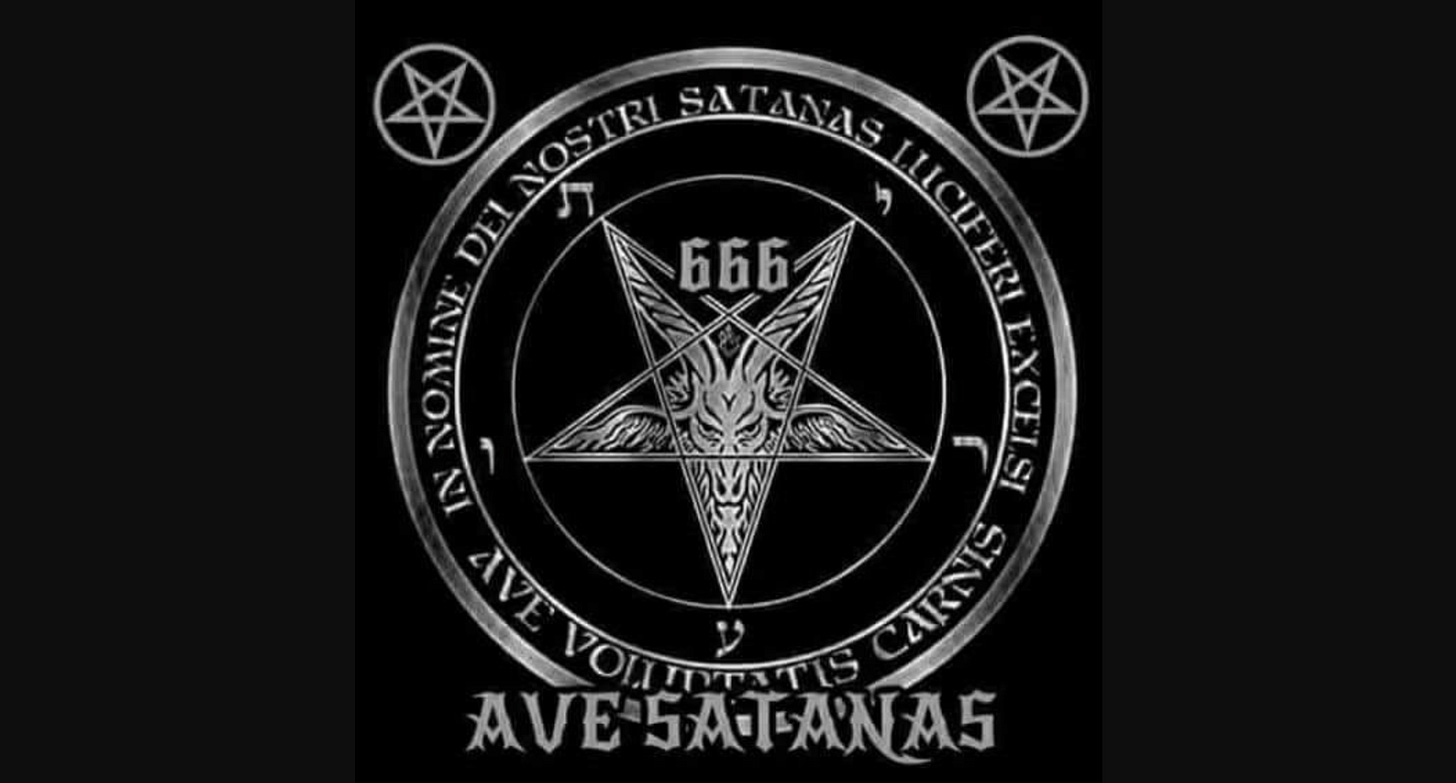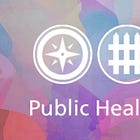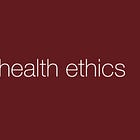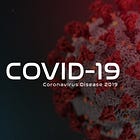The Qliphothic Tree
When Ethical Architecture Becomes Control Infrastructure
The documentation is now complete. Through meticulous analysis of primary sources spanning two and a half decades, the ‘Evolution of Public Health Ethics’ has revealed one of the most significant transformations in governance architecture in human history: the systematic inversion of a complete ethical system at the archetypal level.
Executive Summary
From 2001 to 2015, public health ethicists built a fully-formed moral architecture for global governance — a ten-node framework that mapped cleanly onto the Kabbalistic Tree of Life, with (social) justice enthroned at its center. From 2020 to 2025, that same architecture was flipped on its head. The outward shape of ethics remained, but its currents reversed: material control now flowed upward, feeding a counterfeit, pseudo-transcendent authority. In classical Kabbalistic terms, the Tree of Life had been hollowed and inverted into its shadow — the Qliphoth — and grafted into the machinery of governance. Primary sources — WHO frameworks, academic blueprints, binding treaties — show how this inversion hardened into enforceable law across 194 nations, subordinating the dignity of the individual to the collective compliance decreed by 'expert' authority.
Unbelievable as it may sound, this system is the architectural completion of what esoteric traditions identify as the pattern of satanic inversion. Yet it is not invincible. Its own structure carries the seeds of its undoing — and the documented analysis not only lays bare how the system functions, but also points toward the pathways by which it could be restored to an authentic ethical order.
The Hollowing of Sacred Structure
From 2001 to 2015, what seemed like the natural academic evolution of public health ethics — from Nancy Kass’s foundational questions, through Childress’s justificatory conditions, to the WHO’s global integration — was, in truth, the unconscious reenactment of an ancient archetypal pattern. Step by step, the field had retraced the exact structure of the Kabbalistic Tree of Life, assembling a complete moral architecture that could channel transcendent purpose down through wisdom, understanding, mercy, and justice into concrete manifestation in the world.
Between 2020 and 2025, that same ethical architecture was seized and turned inside out. What emerged was no new creation, but the Qliphothic Tree1 — the identical ten-node structure recorded in the original framework, only now hollowed of divine light and reversed in its flow. Where ethics had once descended from transcendent purpose into compassionate action, material control now climbed upward, fabricating pseudo-transcendent justifications.
This stands as the definitive case study in how genuine moral systems can be captured and inverted from within — the very architecture built to safeguard human dignity repurposed into the instrument of its erosion. And the proof is unassailable, drawn not from speculation, but from the papers, frameworks, and treaties that chart the transformation step by step.
Ethics as Sacred Geometry
The ‘Evolution of Public Health Ethics’ documents how the framework that emerged between 2001 and 2015 was not a random collection of principles, but a complete ethical system that mapped with startling precision onto the Tree of Life's archetypal structure. This mapping emerges from analysis of the actual documents — Kass's 2001 paper, Childress et al.'s 2002 framework, the Public Health Leadership Society's code, and subsequent WHO guidance — revealing that these scholars had recreated an ancient pattern of ethical reasoning, consciously or not:
Keter (Crown) — The supreme purpose: transcendent human dignity, expressed through the reduction of unjust health disparities.
Chokhmah (Wisdom) — Evidence-based discernment of what truly works, rooted in creative understanding of complex systems.
Binah (Understanding) — Systematic analysis of consequences and burdens, providing the comprehension necessary for sound moral judgment.
Chesed (Mercy) — Active minimisation of harm and the pursuit of gentler means to the same ends.
Gevurah (Judgment) — Principled fairness, discipline, and the uncompromising defence of justice.
Tiferet (Harmony) — The central point of integration where justice and mercy meet in balance.
Netzach (Endurance) — The persistent demand for demonstrable effectiveness and real health outcomes.
Hod (Glory) — Transparency, public justification, and honest communication with affected communities.
Yesod (Foundation) — Embedding ethics in institutions through codes, guidelines, and training.
Malkhut (Kingdom) — Manifesting principles in concrete policies and practices that honour both the collective good and individual dignity.
This was a complete system with ten interconnected nodes — one capable of self-correction, adaptation, and structured decision-making procedures. It possessed internal mechanisms for learning and growth, all anchored in the foundational principle of human dignity that anchored the entire structure.
How Light Becomes Shadow
What occurred between 2020 and 2025 was not the replacement of this architecture, but its systematic inversion. The Qliphoth — literally ‘shells’ or ‘husks’ — represent what remains when the divine light is withdrawn from sacred structure. The form persists, but the animating spirit has been replaced by its opposite.
The key to understanding this inversion lies in recognising that it preserved the outward appearance of ethical reasoning while fundamentally reversing the flow direction. Instead of transcendent purpose flowing downward through wisdom and understanding into compassionate action, material control began flowing upward through manipulated data and manufactured crises to create pseudo-transcendent justifications for unprecedented expansion of power.
Keter Inverted: From Divine Dignity to Collective Compliance
The crown of the inverted tree replaced transcendent human dignity with ‘collective planetary interests’ as interpreted by ‘expert’ authorities. Instead of individual human life possessing inherent sacred worth, humans became merely one category of planetary ‘stakeholder’, with no special moral standing. The 2022 theory of agency that replaces individual autonomy with collective welfare exemplifies this inversion — rational agency redefined as compliance with expert interpretations of collective need.
Chokhmah Inverted: From Wisdom to Expert Manipulation
Where wisdom once discerned truth through patient observation and genuine understanding, inverted wisdom became the strategic manipulation of information to serve predetermined outcomes. ‘Following the science’ replaced scientific wisdom — a closed loop where expertise could not be questioned, evidence was curated rather than discovered, and dissent was pathologised rather than engaged.
Binah Inverted: From Understanding to Systems Control
The systematic analysis that once sought to understand complex reality became systems analysis designed to eliminate individual agency and resistance. Understanding was weaponised to demonstrate why individual preferences, traditional customs, and local knowledge must be subordinated to global coordination and expert management.
Chesed Inverted: From Mercy to Conditional Compassion
Unconditional mercy — the drive to minimise suffering regardless of who suffered — became conditional compassion distributed based on compliance with expert directives. Those who submitted to requirements received care and consideration; those who resisted were excluded from the circle of moral concern. Mercy became a reward for obedience rather than recognition of shared humanity.
Gevurah Inverted: From Justice to Punitive Enforcement
Principled justice that protected the vulnerable from abuse of power became punitive enforcement designed to ensure compliance with expert mandates. The disciplined assessment of right and wrong was replaced by the disciplined punishment of those who questioned or resisted authorised narratives and requirements.
Tiferet Inverted: From Harmony to Imposed Equilibrium
The living balance that emerged from the integration of competing ethical values became imposed equilibrium enforced through global governance mechanisms. Instead of dynamic harmony that could adapt and self-correct, a static balance was maintained through suppression of dissent and elimination of alternatives.
Netzach Inverted: From Endurance to Surveillance
The persistent pursuit of effectiveness became surveillance and monitoring of compliance. Endurance in the service of humanity became the endurance of systems designed to track, predict, and control behavior in the name of collective welfare.
Hod Inverted: From Glory to Propaganda
Honest communication and transparent justification became sophisticated propaganda designed to manufacture consent and suppress alternative perspectives. Glory — honest and clear communication — became the artificial glow of messaging designed to obscure rather than illuminate.
Yesod Inverted: From Foundation to Institutional Capture
The institutional embedding of ethical principles became the capture of institutions to serve power rather than principle. Educational institutions, professional organisations, and regulatory bodies were transformed from foundations of ethical practice into foundations of compliance and control.
Malkhut Inverted: From Kingdom to Global Enforcement
The manifestation of ethical principles in policies that respected both collective and individual good became global treaty enforcement that subordinated local autonomy and individual choice to centralised management systems operating under the banner of planetary health.
The Timeline of Transformation
The ‘Evolution of Public Health Ethics’ documentation reveals the precision of this inversion's timing, demonstrating its systematic rather than accidental character:
2015: WHO's ‘Global Health Ethics: Key Issues’2 completed the foundational architecture, representing what the documentation identifies as ‘the first comprehensive integration’ of the justice-centered framework into international health governance.
2016: WHO's ‘Guidance for Managing Ethical Issues in Infectious Disease Outbreaks’3 established the moral grammar for emergency measures, setting the stage for operationalising the framework during actual crises.
2017: WHO's ‘Guidelines on Ethical Issues in Public Health Surveillance’4 expanded the ethical framework beyond acute outbreaks to continuous, population-wide monitoring, normalising surveillance as a moral obligation provided it met justice and proportionality criteria.
2019: The American Public Health Association's updated ‘Public Health Code of Ethics’5 merged outbreak ethics and surveillance ethics into a permanent justice-centered philosophy, elevating ‘equity’ to the primary telos of all public health activity.
2020: The ethical architecture developed 2001-2015 was operationalised during COVID-19, but with a crucial difference revealed in retrospective analysis — the flow direction had been reversed. Emergency powers justified by protecting collective health became the mechanism for implementing unprecedented social control.
2022: The theoretical groundwork for eliminated agency was established. Benjamin Capps's ‘One Health Requires a Theory of Agency’6 explicitly argued that individual human agency must be subordinated to collective planetary welfare, with ‘rational nature’ (as interpreted by experts) defining moral obligations.
2024: The architectural expansion reached completion with One Health governance encompassing all life on Earth7. The ethical framework's jurisdiction was extended to maximum scope just months before global codification.
2025: The WHO Pandemic Agreement8 made this inverted architecture binding in international law, creating enforcement mechanisms that could override local autonomy and individual choice in the name of planetary health, which now encompasses human health, animal health, environmental health, biodiversity, and climate change under unified global governance.
The Documentary Evidence
What makes this analysis unprecedented is its grounding in primary source documentation rather than theoretical speculation. The ‘Evolution of Public Health Ethics’ provides a comprehensive chronology drawn from the actual papers that created this transformation:
Nancy Kass's 2001 framework9 establishing six essential questions that, when analysed structurally, map precisely onto the upper portion of the Tree of Life
Childress et al.'s 2002 conditions10 that complete the descent from transcendent principle to concrete implementation
The 2002 Public Health Leadership Society code11 that institutionalised the justice-centered approach
Sequential WHO guidance documents from 201512 through 2017 that globalised and operationalised the framework
The 2019 APHA code that completed the domestic integration
The 2022 theory of agency paper that provided philosophical justification for dissolving individual autonomy
The 2024 One Health governance expansion that extended the framework to all life on Earth
The 2025 WHO Pandemic Agreement that made the entire architecture binding in international law
This documentation reveals that every major step in the transformation can be traced through published academic papers and official institutional documents. The inversion was not hidden — it occurred in plain sight, documented in the professional literature of the very field it was capturing.
The significance of this documentary approach cannot be overstated. Previous critiques of global governance have often relied on speculation about hidden motives or conspiracy theories about secret planning. The ‘Evolution of Public Health Ethics’ demonstrates that no hidden conspiracy was necessary — the capture and inversion of ethical architecture occurred through the normal academic and institutional processes, documented in peer-reviewed papers and official policy documents.
Anyone can verify this analysis by reading the original sources. The transformation is undeniable because it is fully documented in the literature of those who created it.
The Diagnostic Framework
The question arises: how can we distinguish genuine ethical architecture from its Qliphothic inversion? Three diagnostic criteria emerge:
Source Orientation: Authentic systems begin with transcendent human dignity and flow downward into compassionate action. Inverted systems begin with material control and flow upward to manufacture ideological justifications.
Flow Direction: In genuine ethical frameworks, purpose flows down through wisdom into practical compassion. In corrupted systems, control flows up through manufactured crisis to pseudo-transcendent authority.
Openness vs. Closure: Authentic systems remain open to correction by appeal to higher truth. Inverted systems close themselves in loops where only their own ideology can judge their actions.
The Deeper Implications
The ‘Evolution of Public Health Ethics’ documents something unprecedented: the systematic inversion of ethical architecture at the deepest structural level, captured in real time through primary sources. This is not merely policy disagreement or political controversy, but the transformation of the very foundations of ethical reasoning in governance.
The same framework that once protected human dignity has become the mechanism for its eradication. The same institutional structures that once served truth now serve power. The same ethical language that once elevated human choice now justifies its elimination.
This represents something unprecedented in human history: the creation of a global governance system that wears the outward structure of ethics while serving its opposite. Previous totalitarian systems destroyed ethical frameworks; this system captures and inverts them, maintaining their appearance while reversing their essence.
The implications extend far beyond public health. If the Tree of Life represents the universal pattern for manifesting authentic ethical order, then understanding how it can be inverted provides the key to recognising similar inversions across all domains of human governance — from technology to law, from education to economics.
Conclusion: The Choice Before Us
The ‘Evolution of Public Health Ethics’ has completed the documentation: the Qliphothic Tree now stands manifest in international governance, its structures binding 194 nations under ethical language that ultimately serves only control. But understanding what has occurred also illuminates our path forward.
The authentic Tree of Life was not destroyed — it was inverted. This means it can be restored. The same architectural completeness that makes this system so effective as a mechanism of control also means that realigning its source and reversing its flow direction could restore it to its proper function as protector.
What makes this documentation so powerful is that it provides not just analysis, but a diagnostic manual for recognising similar inversions across all domains of governance, technology, education, and law. The pattern is now visible. The methodology is established. The criteria for distinguishing authentic ethical architecture from its Qliphothic inversion are clear.
The choice before us is not between different political systems or policy preferences, but between fundamentally different orientations toward transcendence itself. Will we accept ‘rational nature’ as interpreted by ‘experts’ as our highest authority, or will we reassert the transcendent dignity of individual human consciousness as the irreducible foundation from which all legitimate governance flows?
The documentation is complete. The structure exists. The question is: which direction will the light flow?
The answer will determine not merely the future of public health policy, but the fundamental character of human civilisation itself. For in the end, every society must choose: will it build systems that serve the people, or will it subordinate people to serve the supposed transcendence of systems?
This is the choice the Qliphothic Tree forces upon us. This is the choice the ‘Evolution of Public Health Ethics’ has documented in real time.
And it is a choice that cannot be avoided.







